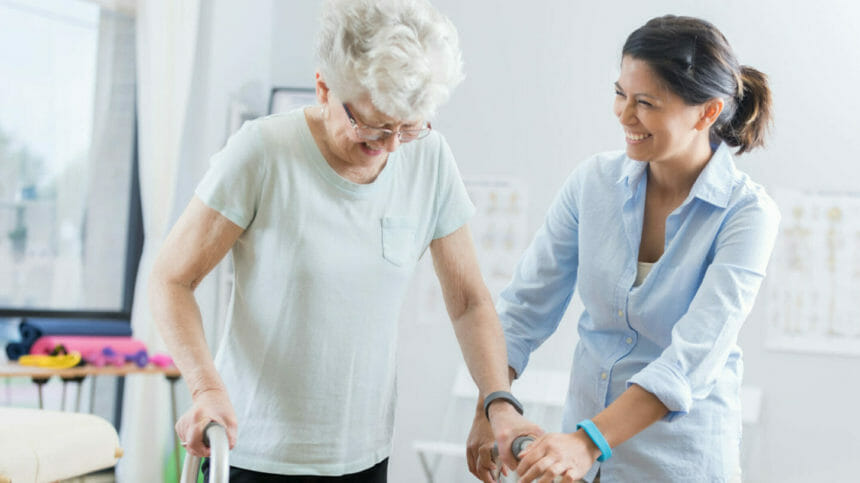
A new study evaluated the connection between activities of daily living and fall-related injuries in older stroke patients who were in rehabilitation. The report appeared Monday in Scientific Reports.
Researchers assessed 741 stroke patients in China who experienced at least one fall post-stroke. All participants were 65 or older, and 74.76% of them had falls that resulted in an injury. Participants were assigned to one of three groups based on their mobility capabilities: bedridden (359 people who could move but couldn’t get out of bed independently), domestic (259 people who could get out of bed or transfer to a wheelchair, and move independently within the home) and community groups (123 people who could move independently in the community, with or without a wheelchair). The risk of injurious falls was higher in the bedridden group than in the domestic and community groups, the data showed.
The team measured participants’ activities of daily living (ADL) abilities using the Barthel index.
When people had a Barthel index score under 35, the likelihood of experiencing a fall resulting in an injury went up by 14% for each unit that it went up from a zero baseline. When it was above a 35, the likelihood of a fall went down by 3% per unit. The team didn’t find an association between ADL ability and injurious falls in the bedridden or community groups.
This may be explained by the fact that stroke patients with a Barthel index score of less than 35 have severe functional impairment and high levels of dependence. As their ability to perform activities of daily life improve, they may be more apt to participate in rehabilitative exercises or self-care activities like walking or getting dressed, the authors noted.Bedridden people, on the other hand, are more likely to have injuries due to movements in bed like rolling over or trying to get up, instead of their activity of daily life levels.
“These findings suggest that only older stroke patients capable of engaging in activities at home demonstrate a correlation between activities of daily living ability and injurious falls,” the authors wrote.




